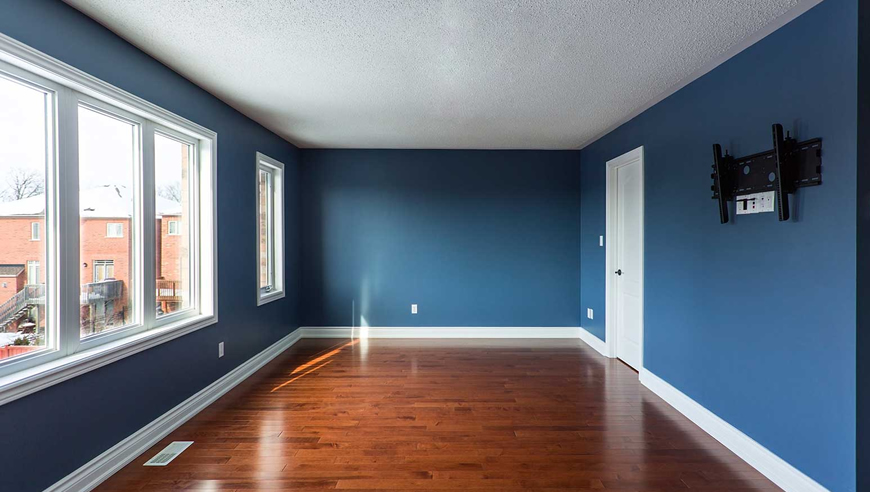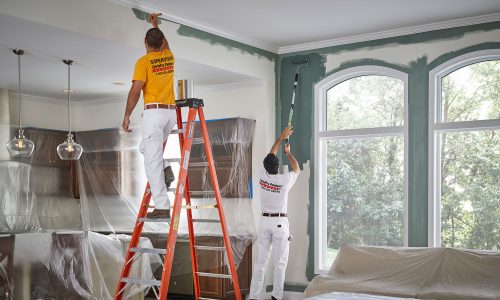Affordable Color Consultation in Lakewood to Transform Your Space with Perfect Hues
Affordable Color Consultation in Lakewood to Transform Your Space with Perfect Hues
Blog Article
Enhance Your Interior Style With Comprehensive Shade Consultation
The assimilation of shade examination right into interior design presents an one-of-a-kind possibility to improve and raise the aesthetic and emotional vibration of a space. By involving with an experienced shade professional, you can navigate the complexities of shade choice, making sure that your options not just complement building attributes however also reverberate with individual style and emotional effect.
Benefits of Shade Examination

Furthermore, color appointment help in maximizing natural light and optimizing spatial understanding. Lighter colors can make an area appear even more large, while darker tones produce an intimate setting. Cleveland Metro Painting Specialists. This calculated application of shade can substantially affect the total atmosphere of any interior space
Furthermore, specialist consultants possess a thorough understanding of timeless classics and existing patterns, making sure that the selected shades will continue to be appealing gradually. This foresight can save customers from expensive redesigns in the future. Finally, shade appointment equips customers by offering them with a clear vision and instructions, cultivating self-confidence in their design choices and eventually bring about a much more enjoyable and successful interior decoration end result.
Recognizing Shade Psychology
The value of color psychology in interior decoration can not be overstated, as it digs into the psychological and psychological effects that different hues can stimulate in individuals. Colors can influence mood, behavior, and even productivity, making them a critical factor to consider in any kind of layout job.
As an example, warm shades such as red, orange, and yellow are frequently related to energy and heat. They can stimulate sensations of excitement and convenience, making them ideal for social spaces like living spaces or cooking areas. Alternatively, trendy shades like blue, green, and purple often tend to evoke calmness and serenity, making them optimal for rooms or reflection locations.
In addition, making use of neutral tones can develop a well balanced environment by allowing the bolder colors to attract attention without frustrating the senses. Recognizing these mental impacts enables designers to produce rooms that not only look visually pleasing but additionally advertise psychological wellness.
Integrating color psychology right into interior decoration involves a thoughtful selection of shades customized to the intended feature of each area, eventually boosting the total experience for its occupants. This awareness is essential for accomplishing a practical and unified interior environment.
The Color Wheel Discussed
Comprehending the connections between tones is necessary for effective indoor design, and the shade wheel serves as a valuable device in this process. The color wheel, established by Isaac Newton in the 17th century, shows the range of colors prepared in a circular style. It consists of primaries-- red, blue, and yellow-- that can not be produced by blending other colors. Additional colors, formed by integrating main shades, include eco-friendly, orange, and purple. Tertiary shades arise from mixing a key and a second shade, leading to shades such as red-orange and turquoise.
The color wheel aids designers comprehend the relationships between colors, including corresponding, comparable, and triadic plans. Complementary colors, located opposite each other on the wheel, create dynamic contrasts that can stimulate an area. Similar colors, situated beside each other, provide a cohesive and unified appearance. Triadic systems make use of three equally spaced colors, using equilibrium and aesthetic passion.
Making use of the shade wheel in interior decoration not just improves aesthetic appeal yet likewise evokes details feelings and environments, making it an important reference for color assessment. Recognizing these partnerships ultimately empowers designers to create areas next page that are both aesthetically exciting and practical.
Choosing the Right Palette
Often, selecting the appropriate palette is a crucial aspect in achieving a Get the facts successful interior decoration job. A well-chosen color scheme can link an area, enhance its features, and stimulate desired emotions. To start, consider the function of the area. Various areas offer different features and require combinations that mirror their desired use; as an example, serene colors such as soft blues or environment-friendlies function well in bedrooms, promoting relaxation.
Light can drastically change how colors appear, so it is essential to examine the area at various times of the day. An unified combination must match these features, producing a cohesive look throughout the area.
When picking colors, make use of the 60-30-10 regulation, which recommends that 60% of the area ought to be a leading shade, 30% a secondary color, and 10% an accent shade. This ratio makes certain balance and aesthetic rate of interest (Cleveland Metro Painting Specialists). Ultimately, example colors on the walls before committing, as this allows you to see exactly how the colors look at here now communicate with one an additional and the total atmosphere they create in your interior decoration task.
Working With a Color Consultant

When functioning with a shade expert, the process usually begins with a preliminary examination. During this meeting, you'll review your vision, preferences, and the existing aspects in your space. The expert will examine your needs and might suggest details shade combinations that straighten with your goals.
After establishing an instructions, the professional will certainly offer examples and aesthetic aids to aid you picture the suggested shade systems. This step is crucial, as shades can appear in a different way under varying lights conditions.
In addition, a shade consultant can assist you in selecting corresponding home furnishings, artwork, and devices to integrate with your chosen palette. By teaming up very closely, you can accomplish a refined aesthetic that elevates your interiors and creates an inviting ambience. Ultimately, the proficiency of a shade consultant can dramatically improve the overall impact of your design project.
Final Thought
In recap, extensive shade consultation offers as a crucial device for boosting interior layout. By leveraging specialist knowledge of shade psychology and spatial characteristics, a customized color combination can be created to stimulate details emotions and produce an unified atmosphere.
By involving with a skilled shade professional, you can navigate the intricacies of shade choice, making certain that your options not just enhance building functions however likewise resonate with personal design and mental impact. It consists of primary shades-- red, blue, and yellow-- that can not be created by blending various other shades.The shade wheel assists designers understand the relationships in between shades, consisting of complementary, analogous, and triadic systems.When choosing colors, utilize the 60-30-10 policy, which recommends that 60% of the space ought to be a dominant shade, 30% an additional shade, and 10% an accent shade. By leveraging specialist expertise of shade psychology and spatial dynamics, a tailored shade scheme can be established to stimulate particular emotions and develop a harmonious setting.
Report this page